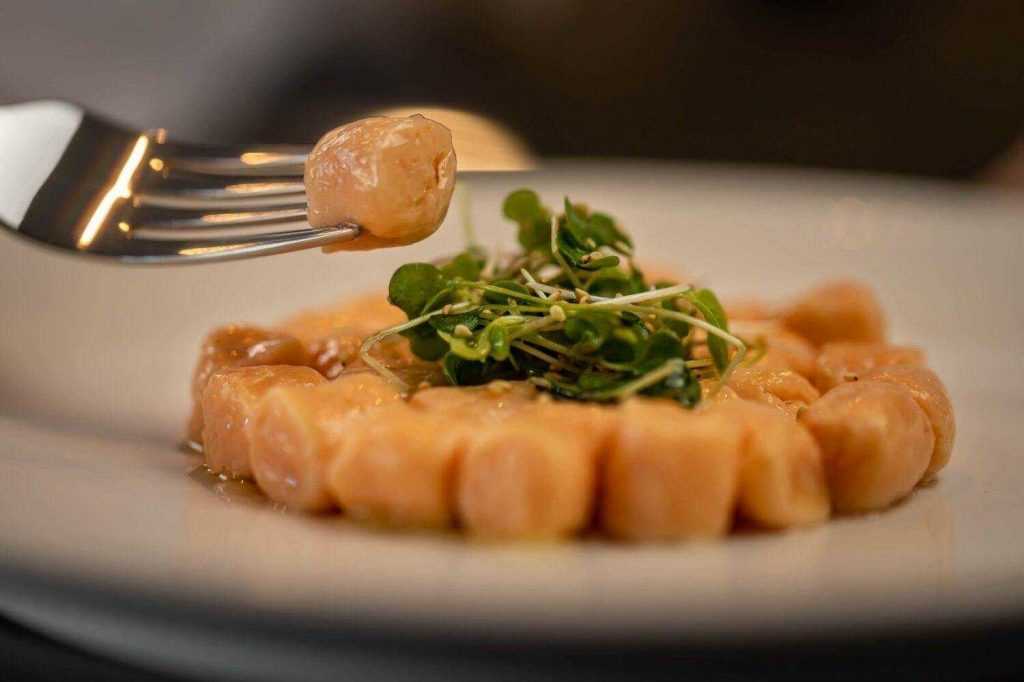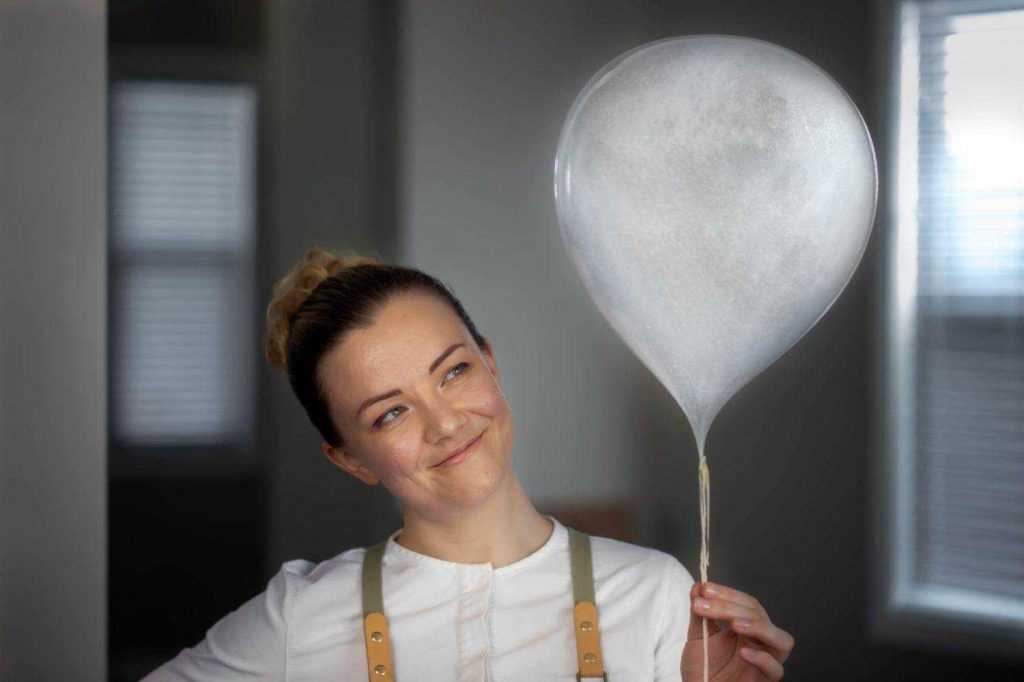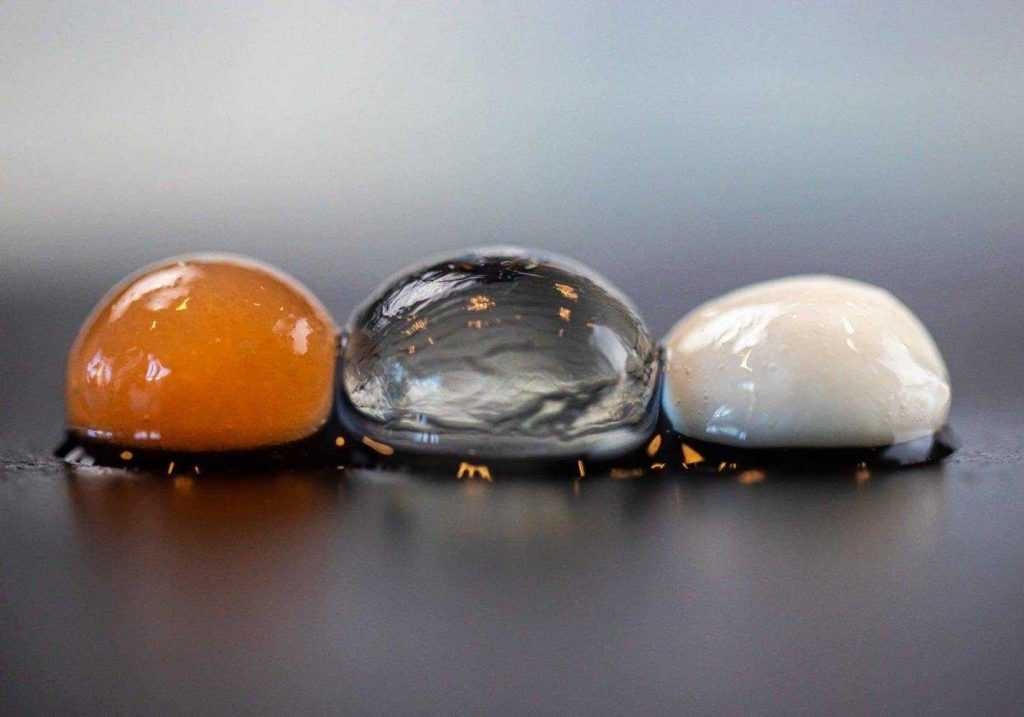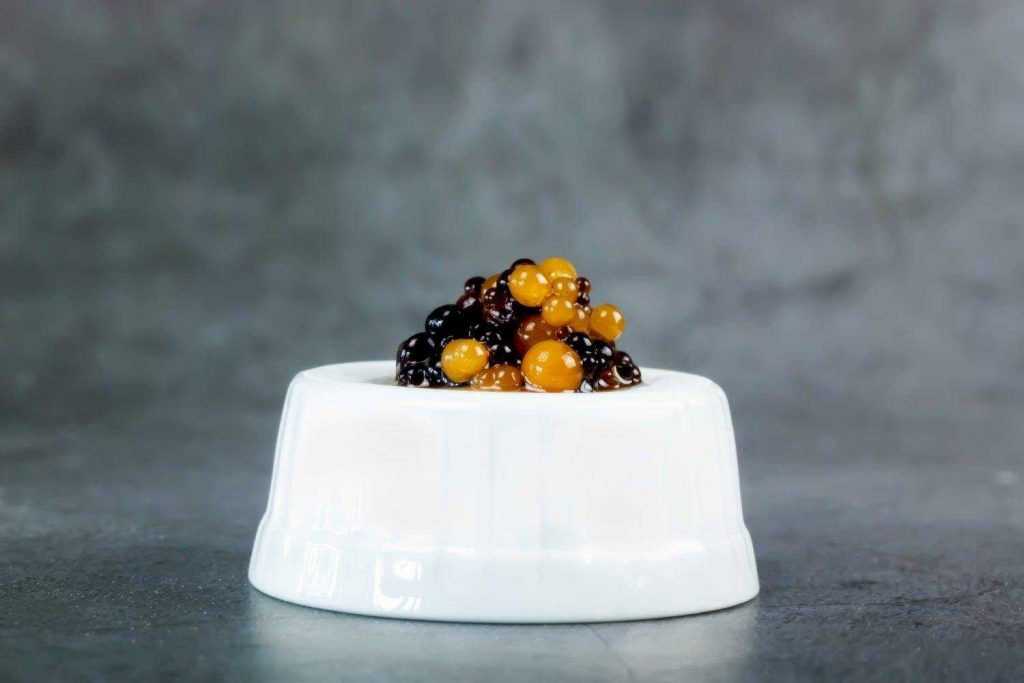Edible Helium Balloons is a signature dish of a 3 Michelin Star restaurant in Chicago, called Alinea (also known from the “Chef’s Table” show on Netflix). “Wouldn’t it be SO COOL to learn how to make those edible balloons?!” – I thought to myself… [siteorigin_widget class=”WP_Widget_Media_Video”][/siteorigin_widget] Chef Grant Achatz and Chef Mike Bagale from Alinea spent probably years in R&D for those edible helium balloons, and I naively thought that I can learn to make them in one go… Boy, I was wrong… First of all, the recipe was not that easy to find. The one that I’ve managed to find on web, was simply not working. So, I had to tweak the recipe several times, test out different variations, run out of ingredients a few times, and finally, after a few weeks, I’ve made it! The balloon was inflating! And just when I thought the hardest part was oven, the second problem revealed itself. Balloons where getting tiny little holes and could not float properly. A few trials and failure and that problem was also fixed. [siteorigin_widget class=”WP_Widget_Media_Image”][/siteorigin_widget] Then, came the third problem, that I honestly though I won’t be able to eliminate. I almost gave up… No matter how many times I’ve tried, I could not figure out how to put a twine on the balloon without destroying it… But then, by accident (like all the genius solutions come across), that was mastered as well. Preparation time: Days/Weeks/Months/Years…. (just kidding), 5 min to read this article and 6 min to watch my video and you are all set! Cooking time: 20 min Per servings: many… I did’t really count, but you can definitely make at least 50 edible balloons (or more) with these ingredients Ingredients: 15 g (1 sachet bag) of Powdered Gelatin 2 tbsp Water 1 cup White Sugar 2 tbsp Corn Starch ½ tsp Xantham Gum 2/3 cup Corn Syrup ½ cup Carrot Juice (or water) ½ tsp Salt Equipment & tools: Helium tank Plastic tube Whisk Medium-size sauce pot [siteorigin_widget class=”WP_Widget_Media_Image”][/siteorigin_widget] IMPORTANT TIPs (what I’ve learned): You cannot make this floating desert on your own! You need 1 person to help you out. Especially with the twine part. When you attempt any molecular gastronomy recipes, make sure your thermometer is properly working. It’s like with baking, temperatures and exact measurements are super important! In this case, it is important to bring the mixture up to 255F in internal temperature. My thermometer was not working properly as it turned out, so I had to buy a new one. You can start inflating edible balloons once the internal temperature drop down to 170 F. Use a wider plastic tube. Inflation does not work as well with tubes of a small diameter. Make sure that no mixture is hanging off the tube when you start inflating your balloons. Whatever is handing off will create a hole later, so get rid of it. The more mixture you wrap around the tip of your tube, the bigger the balloon you would be able to inflate. But do not inflate too big of a balloon, it will fly away before you know it. Wait a few seconds before trying to put a twine around your edible helium balloon. Helium inside the balloon will push a balloon upwards and stretch the bottom part, so it actually would become possible for you to put a twine on without touching and destroying your balloon. Serve your edible helium balloons immediately, or max within 1 min. They will not deflate, but as I’ve mentioned above, they tend to fly away, because of the helium pushing them upward and stretching the bottom part. The longer you wait, the more it’s getting stretched and eventually it will bread apart from the twine and will fly away. For REVERSE SPHERIFICATION process, click HERE You can also see more of my video recipes HERE




